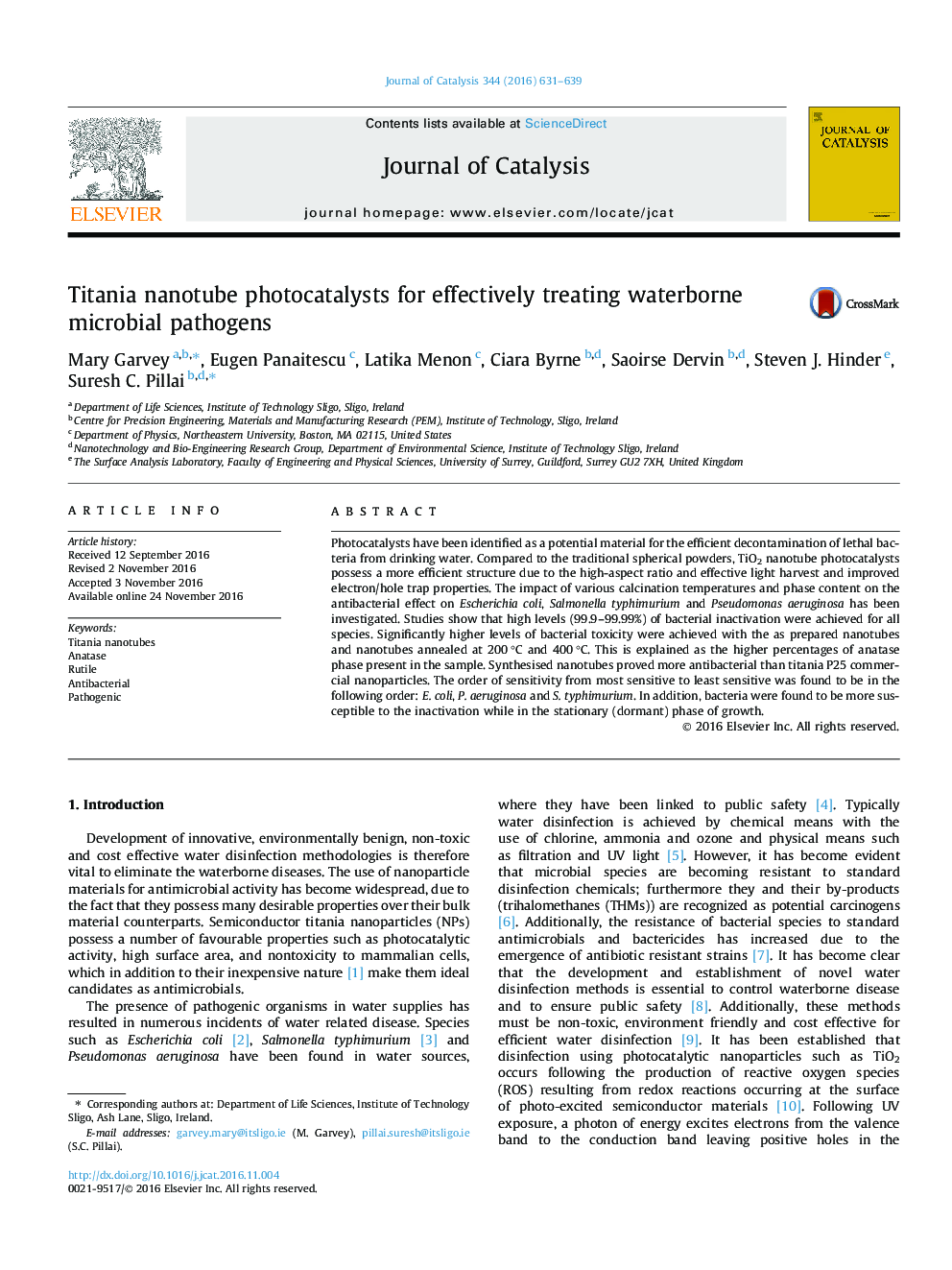| کد مقاله | کد نشریه | سال انتشار | مقاله انگلیسی | نسخه تمام متن |
|---|---|---|---|---|
| 6455898 | 1419765 | 2016 | 9 صفحه PDF | دانلود رایگان |
- Photocatalytic TiO2 nanotubes have been prepared.
- Antibacterial effect on E. coli, S. typhimurium and P. aeruginosa has been studied.
- High levels (99.9-99.99%) of bacterial inactivation were achieved.
Photocatalysts have been identified as a potential material for the efficient decontamination of lethal bacteria from drinking water. Compared to the traditional spherical powders, TiO2 nanotube photocatalysts possess a more efficient structure due to the high-aspect ratio and effective light harvest and improved electron/hole trap properties. The impact of various calcination temperatures and phase content on the antibacterial effect on Escherichia coli, Salmonella typhimurium and Pseudomonas aeruginosa has been investigated. Studies show that high levels (99.9-99.99%) of bacterial inactivation were achieved for all species. Significantly higher levels of bacterial toxicity were achieved with the as prepared nanotubes and nanotubes annealed at 200 °C and 400 °C. This is explained as the higher percentages of anatase phase present in the sample. Synthesised nanotubes proved more antibacterial than titania P25 commercial nanoparticles. The order of sensitivity from most sensitive to least sensitive was found to be in the following order: E. coli, P. aeruginosa and S. typhimurium. In addition, bacteria were found to be more susceptible to the inactivation while in the stationary (dormant) phase of growth.
87
Journal: Journal of Catalysis - Volume 344, December 2016, Pages 631-639
